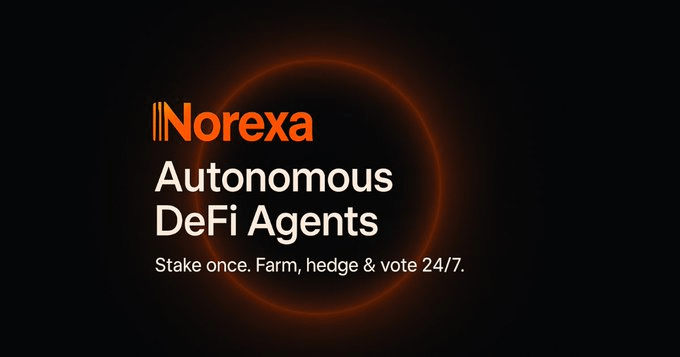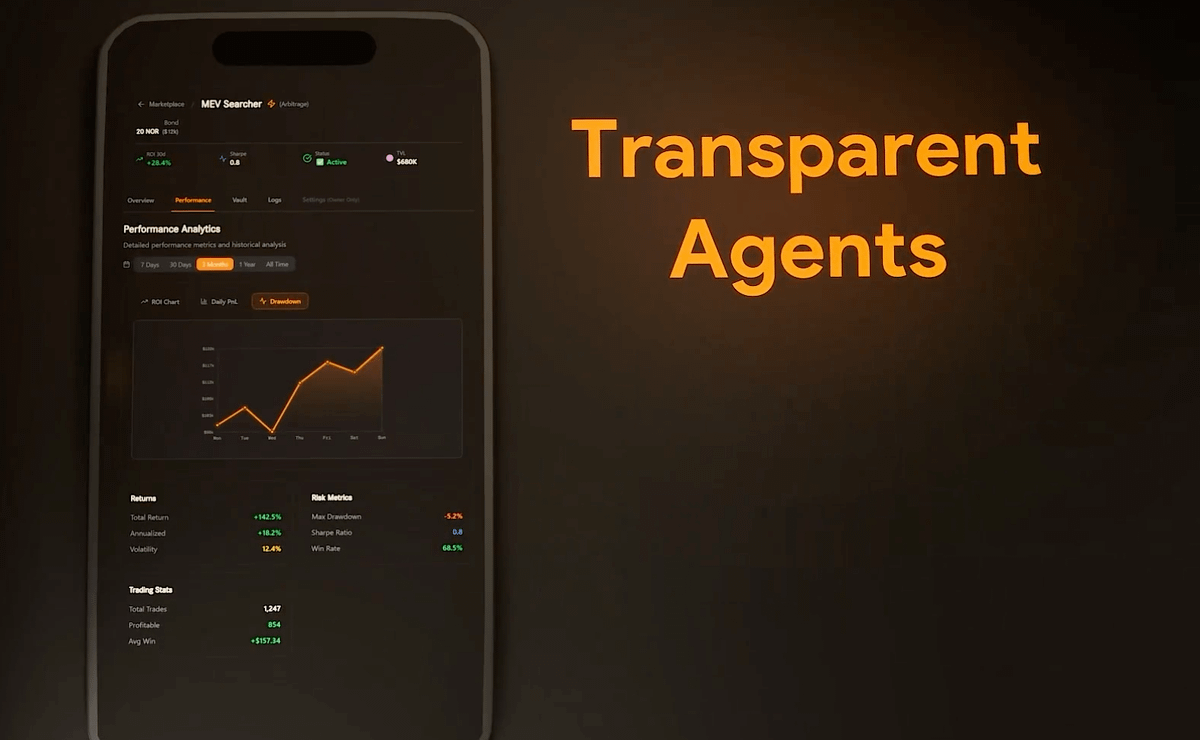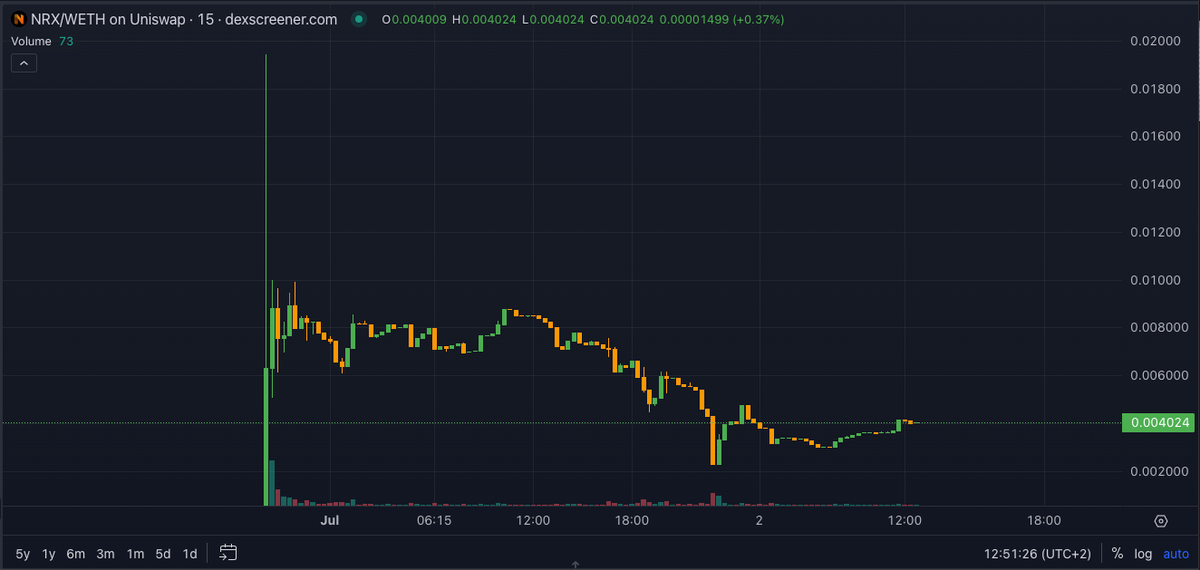Automation without enforcement is just scripting.
@NorexaAI is building infrastructure for agents that execute, earn, and take loss.
The protocol’s design is built around accountability, risk boundaries, and measurable performance 👇
1. 𝐀𝐠𝐞𝐧𝐭 𝐀𝐫𝐜𝐡𝐢𝐭𝐞𝐜𝐭𝐮𝐫𝐞
At the core of Norexa is the Agent Execution Environment: a deterministic sandbox where agents operate in isolation, with no ability to interfere or leak across tasks.
Each agent runs predefined strategy logic (immutable once deployed), working across protocols like Aave, Curve, Compound, and Uniswap.
The execution is based on live data streams (from Chainlink, Band, and protocol-native oracles) ans filtered by agent-level context.
Liquidity depth, yield rates, gas dynamics, portfolio constraints, all processed in real time.
2. 𝐑𝐢𝐬𝐤 𝐚𝐬 𝐚 𝐏𝐫𝐢𝐦𝐢𝐭𝐢𝐯𝐞
Agents are bound by transaction limits, portfolio caps, protocol whitelists, and withdrawal delays.
Every strategy carries risk thresholds that, if violated, trigger emergency exits or warnings.
There’s an interface-level link between agent behaviour and system-level containment.
Every agent reports position size, volatility, drawdown metrics, and failsafes through a risk interface that governs its operation.
If an agent crosses a line, it doesn’t get a slap. It gets paused, suspended, or terminated and its bonded $NRX is slashed in real time.
3. 𝐄𝐜𝐨𝐧𝐨𝐦𝐢𝐜 𝐄𝐧𝐟𝐨𝐫𝐜𝐞𝐦𝐞𝐧𝐭
Agents are required to stake a minimum amount of $NRX proportional to the capital they manage.
The bond increases with strategy complexity, portfolio size, and protocol exposure.
Underperformance results in real-time slashing. And that slashed value is redistributed automatically:
- 70% to affected users
- 20% to the DAO
- 10% to burn or incentive pools
This creates a closed loop where capital moves to competence, and damage is absorbed without socializing losses.
4. 𝐌𝐚𝐫𝐤𝐞𝐭𝐩𝐥𝐚𝐜𝐞 𝐃𝐲𝐧𝐚𝐦𝐢𝐜𝐬
All of this flows into the Agent Marketplace: a performance-driven arena where agents compete for user deposits.
Each one is tracked across net return, drawdown, volatility, uptime, and deviation from benchmarks.
Users don’t pick blindly. They see strategy documentation, risk scoring, and historical context.
Reputation becomes composable and visible. Agent profiles include developer records, licensing terms, and live fee structures.
5. $NRX 𝐚𝐬 𝐄𝐧𝐟𝐨𝐫𝐜𝐞𝐦𝐞𝐧𝐭 𝐋𝐚𝐲𝐞𝐫
$NRX isn’t a reward token but a functional component that binds execution, security, and governance.
It underwrites every agent via bonding, governs agent lifecycle transitions, and serves as the base asset for licensing, slashing, and DAO coordination.
Its utility is tied directly to how much capital flows through the agent network because every new strategy needs bonded $NRX, and every underperformer loses it.
The more execution that moves through Norexa, the more $NRX becomes the collateral layer behind autonomous DeFi.




23.96K
191
The content on this page is provided by third parties. Unless otherwise stated, OKX TR is not the author of the cited article(s) and does not claim any copyright in the materials. The content is provided for informational purposes only and does not represent the views of OKX TR. It is not intended to be an endorsement of any kind and should not be considered investment advice or a solicitation to buy or sell digital assets. To the extent generative AI is utilized to provide summaries or other information, such AI generated content may be inaccurate or inconsistent. Please read the linked article for more details and information. OKX TR is not responsible for content hosted on third party sites. Digital asset holdings, including stablecoins and NFTs, involve a high degree of risk and can fluctuate greatly. You should carefully consider whether trading or holding digital assets is suitable for you in light of your financial condition.

